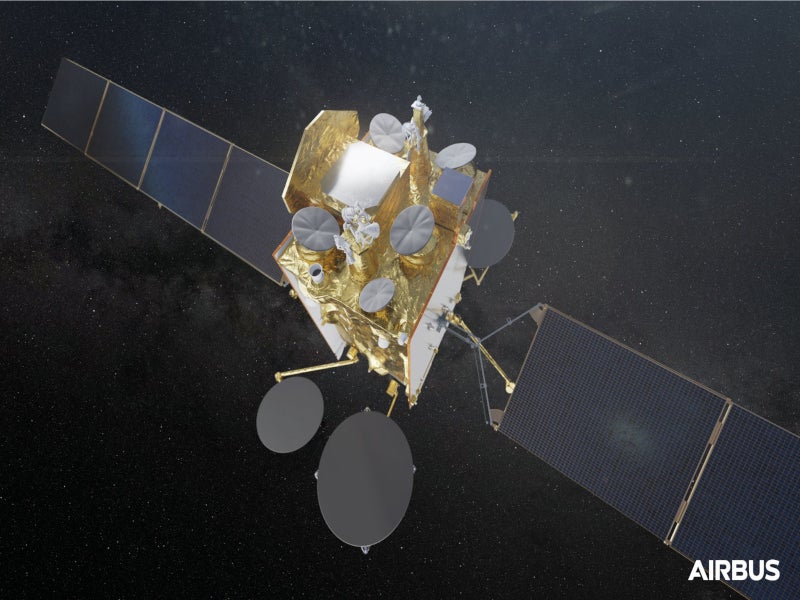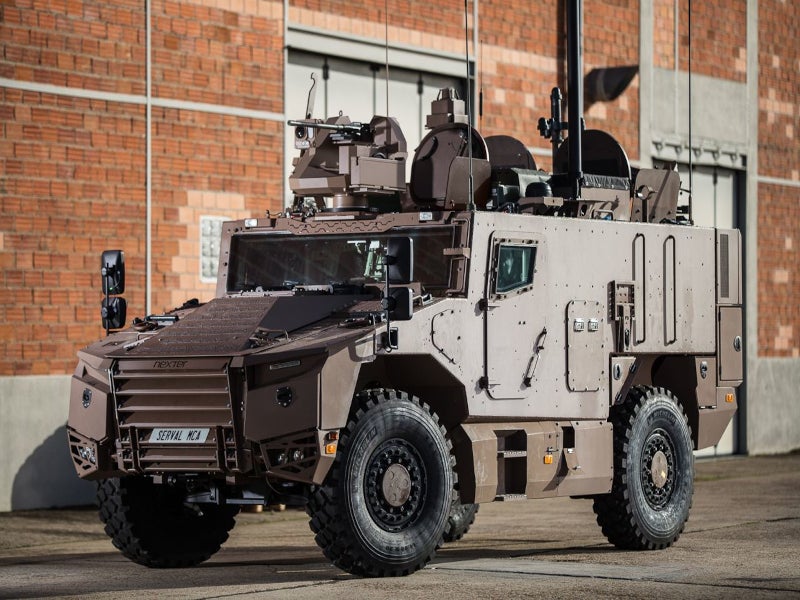The Syracuse IV satellite communications (satcom) programme is providing the French Armed Forces with secure communication capabilities that remain accessible in all situations, including crises and major disasters, and enhances their operational capabilities.
The programme was developed for Direction Générale de l’Armement (DGA), the French defence procurement agency. It offers secure, resilient communications that resist jamming, interference and cyberattacks, ensuring reliable connectivity and fostering joint operations across the French military services.
The project is funded through a collaboration between the DGA, and the European aerospace companies, Telespazio, Airbus and Thales Alenia Space.
SYRACUSE IV programme details
The SYRACUSE IV programme is a collaborative effort between Airbus Defence and Space and Thales Alenia Space. The programme began in 2015 to develop and deploy two cutting-edge satellites, Syracuse 4A and Syracuse 4B.
Thales Alenia Space took charge of the SYRACUSE 4A satellite and created the payloads for both satellites. Airbus Defence and Space oversaw the SYRACUSE 4B satellite, utilising the all-electric Eurostar platform and providing essential components for the payloads.
SYRACUSE 4A and 4B were launched in 2021 and 2023 respectively. The two satellites replaced the previous Syracuse 3A and 3B satellites.
The programme also involves the development of fixed and mobile communication stations for land, air, naval and submarine units within the French Armed Forces. It encompasses not only the satellites but also a comprehensive ground control segment.
The SYRACUSE IV satcom ground segment programme, a part of the SYRACUSE IV programme, includes the development of new Ka-band anchor stations. The stations are crucial for maintaining robust communication links between the satellites and the ground network.
The first version of the SYRACUSE IV ground segment was operationalised at the end of 2023.
SYRACUSE IV satcom ground segment development details
Airbus is involved in the construction and modernisation of a part of the ground segment for the telecommunications satellites used by the French Armed Forces, under a framework agreement called Copernicus.
Airbus’s involvement in the ground segment started with preparatory studies in 2017, which laid the groundwork for the execution phase. It involved the study of the ground network’s architecture, ensuring it meets the demands of new user ground stations and integrates seamlessly with the prevalent Internet Protocol (IP) technology for improved network performance.
SYRACUSE IV satcom ground segment details
The SYRACUSE IV ground segment programme began with the development of a satellite communications management system named Pegasus, as part of the Copernicus project. The unified portal facilitates the efficient allocation of satellite capacities, addressing the diverse needs of the French Armed Forces across land, sea, and air operations. Pegasus ensures effective co-ordination of requests from central military staff and deployed units, utilising both military and commercial satellite resources.
The project allowed Comcept, the multi-satellite communications network designed by Airbus, to leverage the high-speed Ka-band of the SYRACUSE 4A and 4B satellites. Comcept has been serving the French armed forces since 2017.
Previously, Comcept relied solely on the broadband Ka-band transmission capacities of the Franco-Italian military satellite ATHENA-FINDUS, along with the Ku and C-band capacities of commercial satellites.
The components of the SYRACUSE IV programme ground segment and the Pegasus portal enabled the French Armed Forces to use the entire spectrum of satellite capacities dynamically and efficiently. It includes the most secure and resilient connections, as well as high-speed and wide coverage capacities, across all areas of operations.
X/Ka satellite communication stations details
The X/Ka satellite communication stations being developed under the Neptune contract will serve as on-the-pause tactical communication nodes for the high-throughput satellite communications services essential to the French Army’s information and communication systems.
The Neptune contract is the latest development being undertaken by Thales, as part of the SYRACUSE IV ground segment programme.
The new SYRACUSE IV satcom stations will be installed on the Serval light multi-role armoured vehicles as part of the Scorpion programme.
Mercure on-the-move stations are being integrated into the French Army’s Griffon and Serval vehicles under the Neptune contract, while airborne stations are being fitted to the Air Force’s wide-body aircraft.
The X and Ka-band satellites provide enhanced performance in terms of communications capacity, flexibility and resistance to jamming, addressing the future needs of the armed forces.
Contractors involved
Airbus secured a ten-year framework agreement called the Copernicus project to enhance the ground segment infrastructure, with an initial order exceeding €100m ($111.4m) in March 2020.
In July 2024, Thales was awarded the Neptune contract by the DGA to supply the French Army with thirty dual-band X/Ka satellite communication stations.






